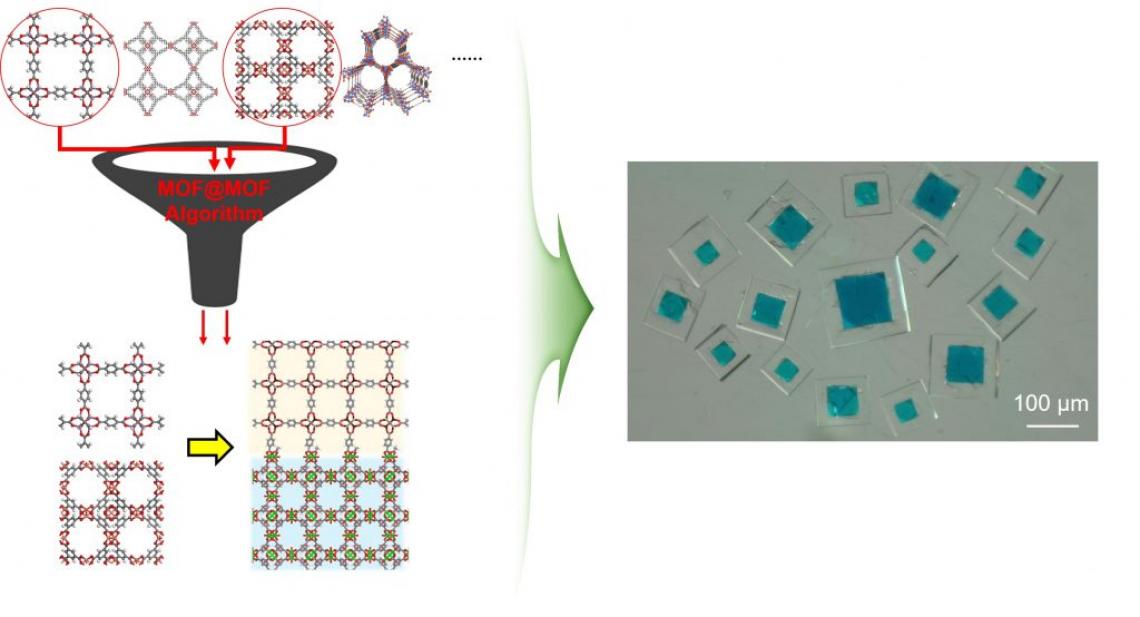A recent study, affiliated with UNIST has unveiled a novel algorithm that identifies optimal pairs for composing metal-organic frameworks (MOFs).
The new algorithmic study reported in the August 2019 issue of Nature Communications is a product of thoughtful collaboration between Professor Hoi Ri Moon from the Department of Chemistry at UNIST and Professor Ji-han Kim from the Department of Biochemical Engineering at KAIST. Their work is expected to serve as a starting point to accelerate the discovery of novel MOF composites that can potentially be used for many different applications.
The metal-organic frameworks (MOFs) used in this study are organic-inorganic hybrid crystalline porous materials that consist of a regular array of positively charged metal ions surrounded by organic linker molecules. Owing to the vast diversity of metal-containing nodes, organic ligands, and connectivity, more than 80,000 collections of synthesized MOFs have been reported over the last two decades. MOFs are the next generation of hybrid porous materials that can replace the existing Zeolites, as they possess high pore volumes, large surface areas, multiple topologies, tuneable pore size, and surface chemistry.
In recent years, research is being carried out to optimize performance by integrating MOFs and other classes of materials to create new multifunctional materials and new structures with synergetic properties. Yet, the precise nature of the interaction and the bonding at the interface between the two materials still remains unknown. The challenge is to determine the right matching pairs out of 80,000 MOFs.
In the study, the team presented a joint computational and experimental approach to rationally design composite MOFs known as MOF@MOFs, which are produced by growing one MOF on a different MOF. The new approach screens thousands of MOFs and identifies the optimal MOF pairs that can seamlessly connect to one another by taking advantage of the fact that the metal nodes of one MOF can form coordination bonds with the linkers of the second MOF. The joint research team noted that the metal node of one MOF can co-ordinately bond with the linker of a different MOF. They also noted that precisely matching interface configurations at atomic and molecular levels can enhance the likelihood of synthesizing MOF@MOFs.
Based on the simulation results, Professor Moon and her research team screened thousands of MOFs and identified optimal MOF pairs that can seamlessly connect to one another by taking advantage of the fact that the metal node of one MOF can form coordination bonds with the linkers of the second MOF. Six pairs predicted from the computational algorithm successfully grew into single crystals. This posits that such workflow can enhance the likelihood of synthesizing MOF@MOFs in the form of large single crystals, and thereby demonstrate the utility of rationally designing the MOF@MOFs.
“Through collaborative research of experiments and computer simulation, our research allows the design and synthesis of multifunctional porous composites that have been difficult to synthesize,” says Professor Moon. “In addition, this research can be seen as a successful case in which the research method used in drug discovery and development, being extended to lasrge-scale porous materials.”
“This study is the first algorithm for predicting the synthesis of composite MOFs, to the best of their knowledge,” says Professor Kim. “The number of predicted pairs can increase even more with the more general 2D lattice matching, and it is worth investigating in the future.”
This study has been supported by Samsung Research Funding and Incubation Center for Future Technology.
Journal Reference Ohmin Kwon et al., “Computer-aided discovery of connected metal-organic frameworks,” Nature Communications, (2019).




